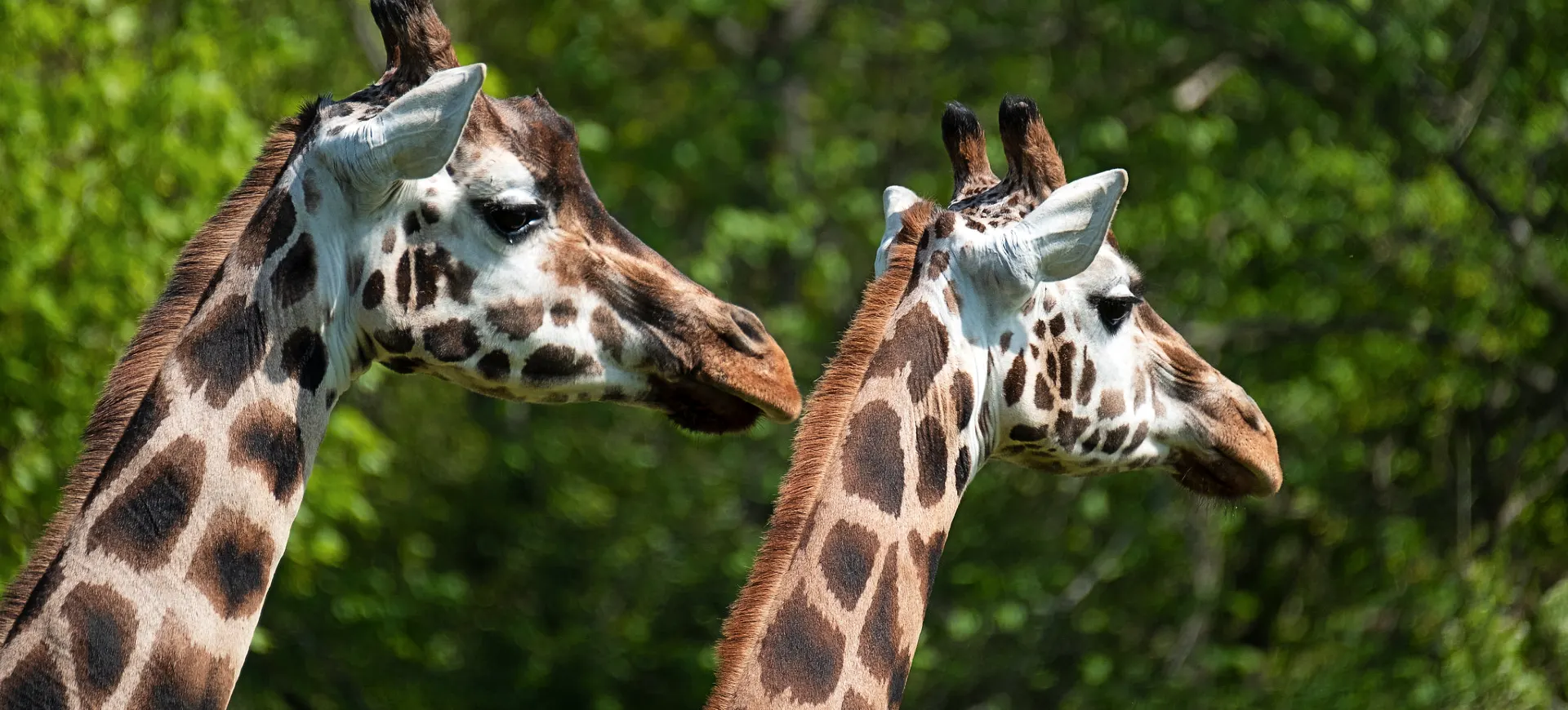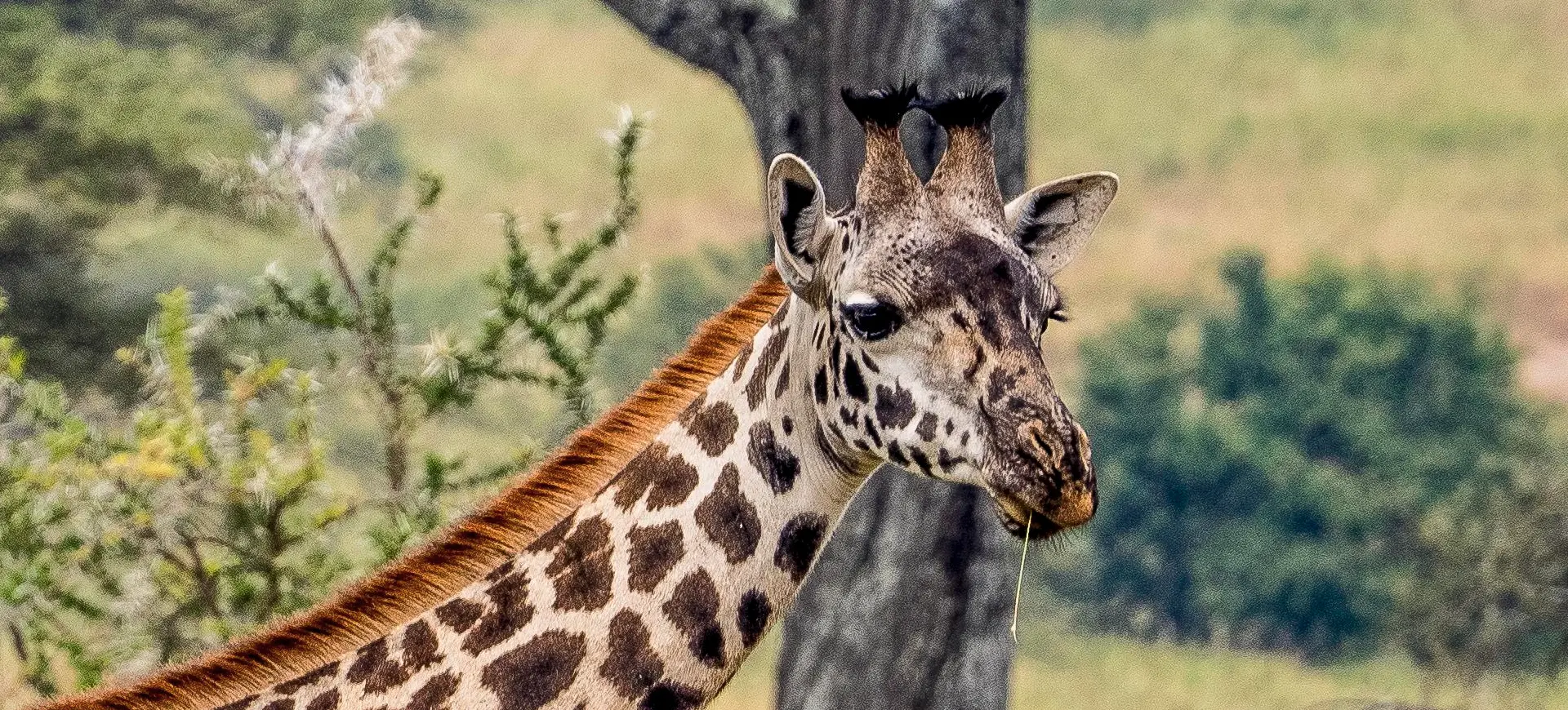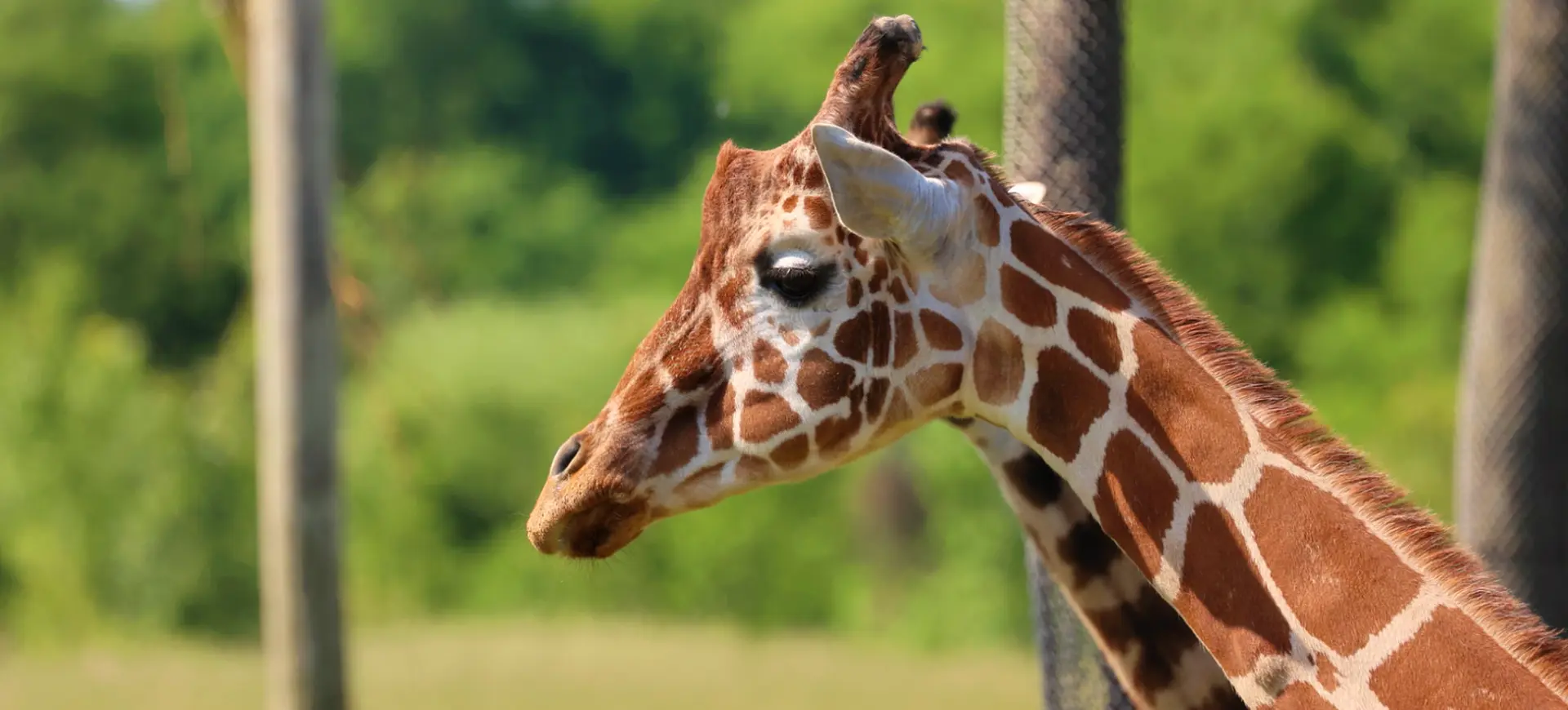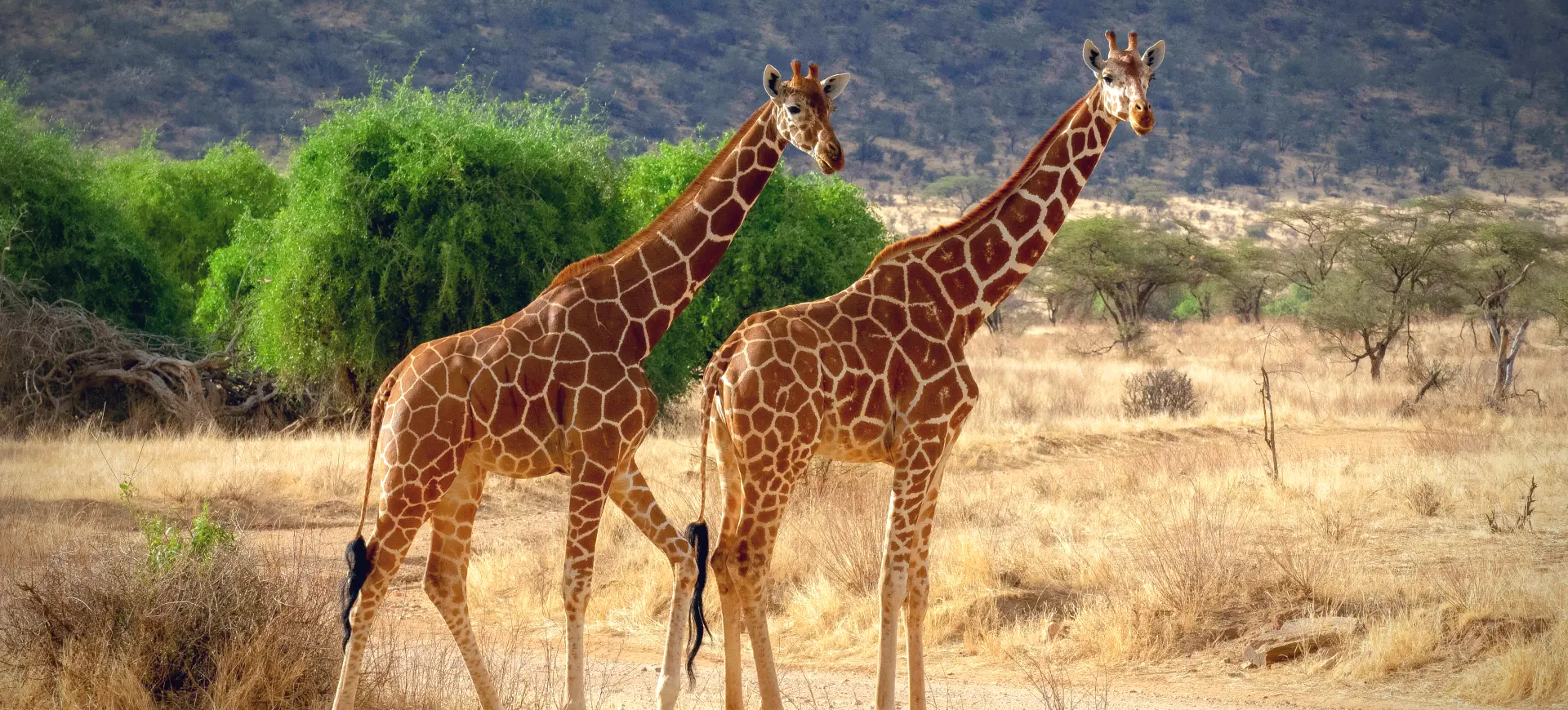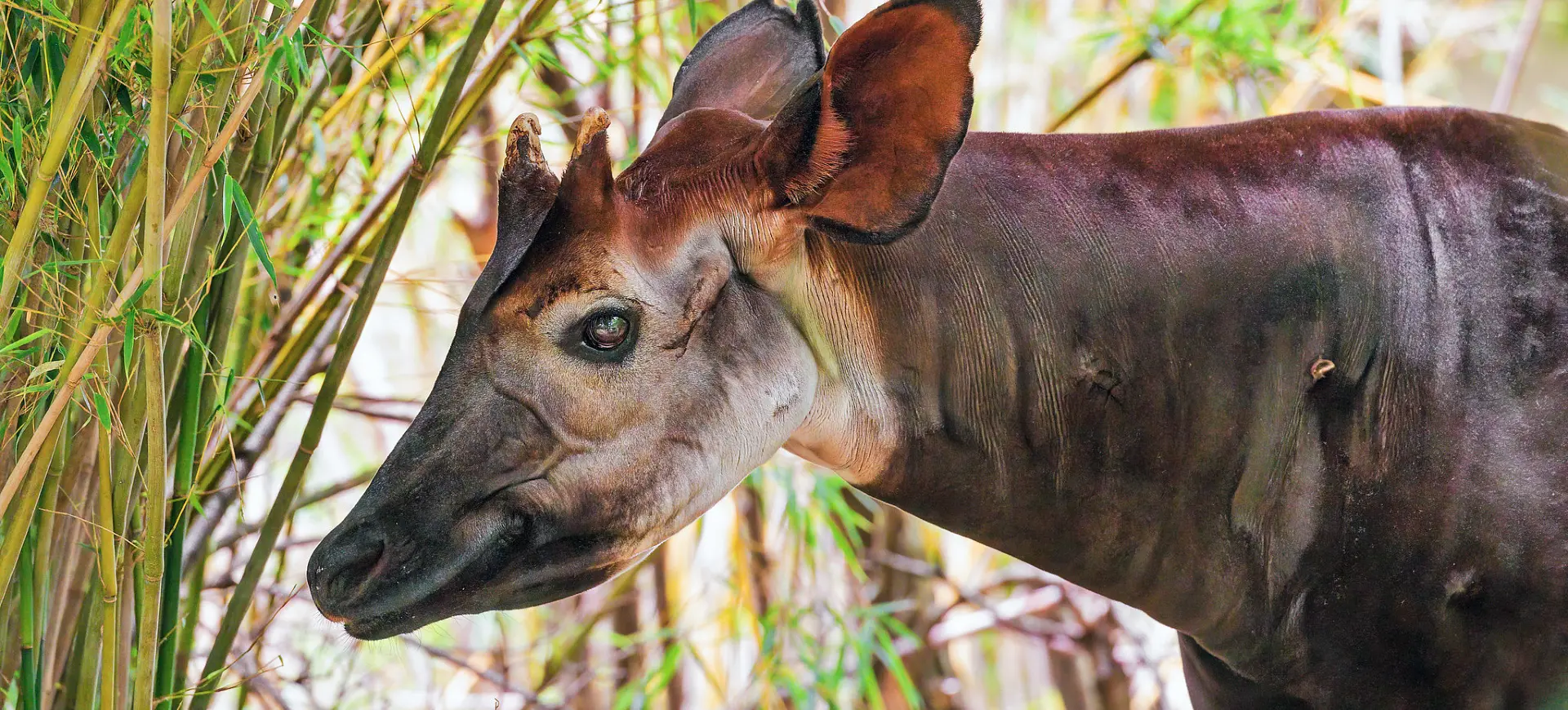Overview
Rothschild’s Giraffe (Giraffa camelopardalis Rothschild), also known as the Baringo Giraffe, Nubian Giraffe, or the Ugandan Giraffe, is a unique and endangered giraffe population with distinct characteristics. One of the most distinguishing features of this subspecies is its coat pattern, which sets them apart from others. Rothschild’s Giraffes boasts broader dividing white lines on their coats and lack spotting beneath the knees, giving them the appearance of wearing white socks. The dark spots on their coats can range from chestnut to orange-brown, adding to their distinct and captivating appearance.
Despite their towering heights, Rothschild’s Giraffes are known for their gentle demeanor. They typically live in small herds and exhibit fascinating behaviors such as ‘necking’ among males, a form of combat used to establish dominance and hierarchy within the group. Additionally, social grooming is a common sight among these giraffes, reinforcing their strong social bonds. Despite their seemingly cumbersome appearance, these majestic animals are remarkably agile and can reach up to 35 mph speeds, making them adept navigators in their savannah and woodland habitats.
As browsers, Rothschild’s Giraffes rely on their elongated necks to reach and feed on leaves, flowers, and fruits available in the tree canopy. Their height gives them a distinct advantage, allowing them to access nourishing resources that other herbivores cannot reach. However, their unique features and elegance come with the unfortunate reality of their endangered status. The declining population of Rothschild’s Giraffe highlights the urgent need for conservation efforts to protect and preserve these majestic creatures, ensuring their continued existence in the wild for generations.
Taxonomy
Kingdom
Phylum
Class
Order
Family
Genus
Species
Sub Species
Type
Physical Description:
Rothschild’s Giraffes are tall creatures with uniquely patterned coats. Their coat is divided into large, dark patches separated by white lines, broader than other giraffe subspecies. They display a distinct lack of spots beneath the knees, which gives the impression of wearing white socks. Both sexes have short ‘ossicones,’ or horn-like protrusions on their heads. However, those of females are thinner and tufted.
Their long neck, a distinct characteristic of all giraffe species, contains only seven vertebrae, the same number as human necks. Their long legs, necks, and small hump over their shoulders give them a height advantage over most terrestrial animals, allowing them to feed from tree canopies others cannot reach.

Lifespan: Wild: ~25 years || Captivity: ~30 years

Weight: Males: Up to 2,600 lbs (1,180 kg) || Females: Up to 1,800 lbs (816 kg)

Length: Males: up to 15-20 feet (457-610 cm) || Females: up to 13-15 feet (396-457 cm)

Height: Males: Up to 19 feet (5.8 meters) || Females: Up to 16 feet (4.9 meters)

Top Speed: 35 mph (56 km/h)
Characteristic:
Native Habitat:
Rothschild’s Giraffes, scientifically known as Giraffa camelopardalis Rothschild, was originally distributed across Western Kenya, Uganda, and Southern Sudan. They thrived in diverse habitats, including savannahs, grasslands, open woodlands, and areas enriched with acacia growth, which constituted their primary food source.
However, the once-widespread presence of Rothschild’s Giraffes has significantly declined due to various factors, including habitat loss and human-induced threats. As human activities have encroached upon their natural habitats, their range has contracted, leaving them at risk of further population decline. To secure the future of this endangered giraffe population, concerted conservation efforts are essential to protect and restore their habitats and ensure their survival for generations to come.
Biomes:
WWF Biomes:
Biogeographical Realms:
Continents:
Diet:
Diet & Feeding Habits:
Rothschild’s Giraffes are browsers, primarily feeding on leaves, shoots, and fruits from trees. Their favorite leaves come from acacia trees, and they utilize their long, prehensile tongue, which can reach up to 18 inches in length, to pull down foliage while avoiding the acacia’s thorns. Their height allows them to reach food sources that most other herbivores cannot.
They will feed on new shoots; during the dry season, they will eat evergreen leaves. They can go without water for extended periods, absorbing most of their water from the leaf moisture. Despite their massive size, these giraffes require less food than many other herbivores because they have a more selective diet and slow metabolism.
Mating Behavior:
Mating Description:
Rothschild’s Giraffes engage in year-round breeding activities, with a notable increase in mating behavior during the rainy season. To assess a female’s readiness for mating, males employ a unique method of tasting her urine to detect signs of estrus. When a female is receptive to mating, the male closely follows her until she permits him to mate.
This breeding behavior contributes to the maintenance of Rothschild’s Giraffe population and helps ensure the continuation of the species. Their reproductive adaptability and year-round breeding capabilities reflect the species’ resilience in their natural environment.
Reproduction Season:
Birth Type:
Pregnancy Duration:
Female Name:
Male Name:
Baby Name:
Social Structure Description:
Rothschild’s Giraffes exhibit social behavior and typically form loose herds of 5 to 15 individuals. These groups are fluid, with giraffes freely joining and leaving as they choose. The herds commonly comprise females and their young calves, while adult males may either form bachelor groups or prefer solitary roaming. To establish dominance and hierarchy, male giraffes use “necking,” swinging their long necks to headbutt opponents, vying for social status within the group.
Their social structure and unique “necking” behavior provide a fascinating glimpse into the complexities of Rothschild’s Giraffe interactions and dynamics within the wild. The fluidity of their herds and the male’s striking displays of dominance contribute to the captivating social dynamics of these graceful creatures.
Groups:
Conservation Status:
Population Trend:
Rothschild’s Giraffes, one of the most endangered giraffe subspecies, face a precarious situation with a wild population of less than 3,000 individuals. Their numbers have dwindled primarily due to the detrimental impacts of habitat loss, human-wildlife conflict, and poaching. The loss of their natural habitats to human activities has severely restricted their range and access to vital resources. Furthermore, encounters with humans often lead to conflicts, further endangering their survival.
The fragmented nature of their population poses additional challenges to the Rothschild’s Giraffe’s long-term viability. With isolated groups, there is a risk of reduced genetic diversity, which can weaken their ability to withstand environmental changes and threats. Conservation efforts are crucial to address these challenges and secure a sustainable future for this iconic and endangered giraffe subspecies.
Population Threats:
Rothschild’s Giraffes encounter critical threats, with habitat loss resulting from agricultural expansion and human settlement being one of the most significant challenges. The encroachment of human activities into their natural habitats has led to the loss of essential resources and reduced their available living space. Poaching for meat and hide also poses a severe risk to their survival, directly impacting their population numbers. Additionally, civil unrest in their native regions further exacerbates the challenges these giraffes face, contributing to their vulnerable status.
The fragmented nature of their populations adds another layer of concern for Rothschild’s Giraffes. There is a risk of reduced genetic diversity in isolated groups, making them more susceptible to environmental changes and disease. Conservation efforts are vital to address these threats and protect the remaining populations of this endangered giraffe subspecies, ensuring their continued existence in the wild.
Conservation Efforts:
Conservation efforts for Rothschild’s Giraffes revolve around critical strategies aimed at their habitat preservation and population growth. One key approach involves protecting their natural habitats and establishing new populations through translocation initiatives in carefully chosen protected areas. These endeavors help expand their range and promote genetic diversity, enhancing their chances of survival.
Education programs play a vital role in creating awareness about the endangered status of Rothschild’s Giraffes and the importance of conservation efforts. Increasing public understanding fosters greater responsibility toward the species and their habitats. Additionally, mitigating human-wildlife conflict is paramount to ensure peaceful coexistence between local communities and giraffes. The combination of in-situ conservation efforts and ex-situ programs in zoos worldwide, which focus on well-planned breeding programs, plays a crucial role in preserving the genetic diversity of Rothschild’s Giraffes, thereby contributing to their long-term survival.
Additional Resources:
Fun Facts
- Rothschild’s Giraffes are one of the tallest animals in the world, reaching up to 19 feet in height.
- They have a unique “tongue twister”: their tongues can reach up to 18 inches long and are blue-black to protect against sunburn while reaching for leaves.
- Despite having long necks, they have the same number of neck vertebrae as humans – just seven, but each is up to 10 inches long!
- Rothschild’s Giraffes are known as “silent watchers,” but they do make sounds such as moos, roars, hisses, and whistles.
- They can survive for weeks without water, obtaining moisture from leaves.
- These giraffes often sleep standing up, and even when they sit, they coil their necks and rest their heads on their rumps.
- When running, giraffes move both right legs forward and then both left legs, which is different from most four-legged animals.
- Rothschild’s Giraffes have a heart that weighs up to 25 pounds and can pump 16 gallons of blood per minute.
- They have one of the shortest sleep requirements of any mammal, as little as 30 minutes a day.
- Their spots, unique to each individual, provide excellent camouflage in the dappled light and shade of their woodland habitats.








